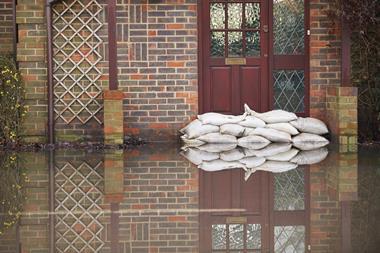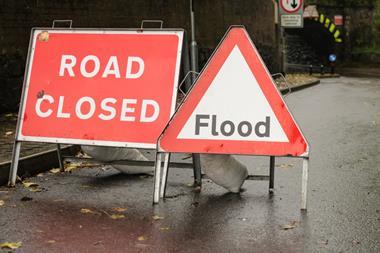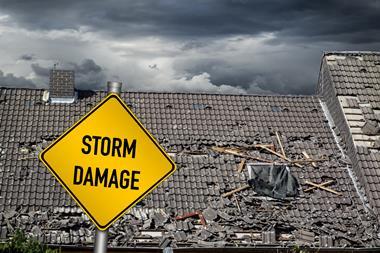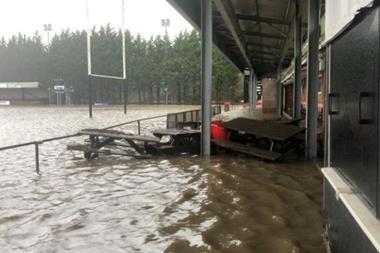The code was launched in the Houses of Commons today and is aimed at insurers among other sectors
A cross-industry code of practice on flood resilience has been launched to make it easier for homeowners and businesses to install measures that protect their properties from flooding.
It was revealed at a reception this afternoon at the House of Commons hosted by MP Rachel Maskell on behalf of Defra Property Flood Resilience Group, the flood minister Rebecca Pow MP also joined her.
The code is aimed at insurers, local authorities, builders and developers, as well as home and business owners in high risk flood areas and is set to now be rolled out to the rest of the UK.
It provides practical guidance to a range of audiences and aims to bring consistency across the market to help limit the damage that floods can cause.
Its scope includes guidance and standards on each stage of the property flood resilience process:
- Surveying
- Identifying suitable products
- Installation
- Construction
- Maintenance
The code will consider each stage of the build process and review the building, aiming to help raise awareness and confidence among property owners in high risk areas.
The news follows 5.2 million properties being at risk of flooding in the UK, according to the Environment Agency.
Colm Holmes, global chief executive in general insurance at Aviva said that it has seen first-hand the devastation and trauma that flooding can cause.
In recent floods in South Yorkshire and the Midlands it has helped more than 200 customers whose properties were flooded.
He said: “Sadly, not every flood can be prevented, but we believe flood resilient and resistant measures have an important role to play in helping homeowners and businesses recover quicker.
“We’ve been at the forefront of encouraging our customers to consider the practical measures they can take following a flood to make their properties more resilient, and we’ve been installing these measures on a cost-neutral basis for some years.
“These measures are vital in reducing the damage that floods cause, and more importantly limiting the impact on customers’ mental health and well-being.”
Round table
The roundtable’s outgoing chair, Graham Brogden, said: “The development of the code is the culmination of the focus and dedication of the round table over the last three years in bringing collaboration across the whole industry.
“Currently a lack of regulation and standards for the installation of flood resilient measures causes confusion for property owners and a lack of awareness about their effectiveness.
“The code will bring much needed guidance to the industry as well s confidence, and it will be fundamental to ensuring more properties are properly protected from flooding in the future.”
The code has been developed by an industry-led Property Flood Resilient Round Table set up by Defra following the publication of the Property Flood Resilience Action Plan (Bonfield Report) in 2016.
Round table members include – the Environment Agency, Aviva plc, Welsh Government, Scottish Government and Northern Ireland Department for Infrastructure.
It is supported by a range of other industry bodies, including Business in the Community (BITC).
The code covers flood resistance – measures to prevent water from entering properties. It also covers flood resilience – which can help limit the damage that floods cause.
These measures could prove invaluable in helping home and business owners recover from flooding and reduce the stress flooding can bring, with 40% of businesses failing to re-open after a flood according to statistics from Rainbow International Restoration.
Storm Ciara
Emma Howard, chair at the Environment Agency said that her thoughts was with those that have been affected by the severe weather over the weekend.
Storm Ciara swept across the UK yesterday with heavy rain and gusts of wind up to 97mph causing widespread flooding and major disruption to transport networks.
Environment Agency teams are out on the ground operating flood defences and supporting communities.
Howard continued: “At the start of this ‘Year of Climate Action,’ this is a timely reminder that it’s essential we increase our resilience to the impacts of climate change. We need to develop consistent standards for flood and coastal resilience in England. Standards will help communities better understand their risk and give them more control about how to adapt ad respond, in part by building back better after flooding.”
The Environment Agency will be setting out how it does this in greater detail when it launches its flood and coastal risk management strategy over the coming months.
Subscribers read more
The growing complexity of Lenders Finance Agreements - What do brokers need to know?

Hosted by comedian and actor Tom Allen, 34 Gold, 23 Silver and 22 Bronze awards were handed out across an amazing 34 categories recognising brilliance and innovation right across the breadth of UK general insurance.




















































No comments yet